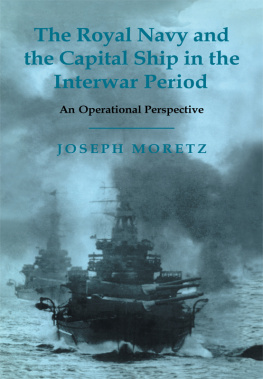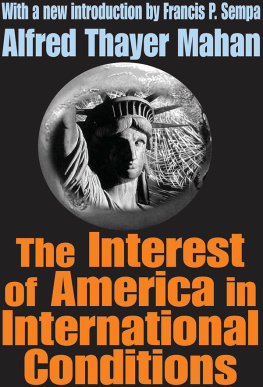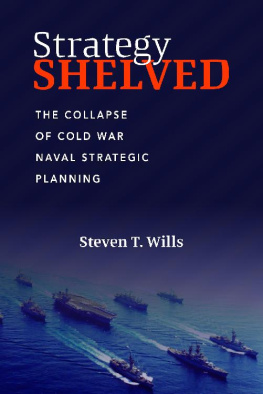
This edition is published by PICKLE PARTNERS PUBLISHINGwww.picklepartnerspublishing.com
To join our mailing list for new titles or for issues with our books picklepublishing@gmail.com
Or on Facebook
Text originally published in 1948 under the same title.
Pickle Partners Publishing 2015, all rights reserved. No part of this publication may be reproduced, stored in a retrieval system or transmitted by any means, electrical, mechanical or otherwise without the written permission of the copyright holder.
Publishers Note
Although in most cases we have retained the Authors original spelling and grammar to authentically reproduce the work of the Author and the original intent of such material, some additional notes and clarifications have been added for the modern readers benefit.
We have also made every effort to include all maps and illustrations of the original edition the limitations of formatting do not allow of including larger maps, we will upload as many of these maps as possible.
MAHAN GOES TO WAR: EFFECTS OF WORLD WAR I ON THE U.S. NAVYS FORCE STRUCTURE AND OPERATIONAL PLANNING
By
LCDR Brandon E. Todd, USN
TABLE OF CONTENTS
Contents
TABLE OF CONTENTS
REQUEST FROM THE PUBLISHER
ABSTRACT
A. T. Mahans 1890 book The Influence of Sea Power on History presented a theory of sea power that proclaimed the capital ship-centered battle fleet essential to any great maritime nations long-term prosperity. Mahan also formulated a beguilingly simple operational concept based on the teachings of Jomini. His ideas quickly became dogma in the worlds navies, including the U.S. Navy. In the decades before World War I, the U.S. Navys force structure and operational plans reflected Mahans emphasis on the battleship and fighting as a concentrated fleet.
The naval conflict between Germany and Great Britain in World War I did not resemble Mahans vision for what war at sea between two great powers should look like. Rather than consisting of decisive battles between fleets of capital ships, the War involved distant blockade, raids, mining, and especially commerce raiding by German submarines. Mahans rival theorist, Sir Julian Corbett, better described the character of World War I.
Despite the advantage of almost three years of observing the European conflict, the U.S. Navy did little to prepare for this new kind of war. It entered the War in April, 1917 with a top-heavy force of battleships, and operational plans completely unsuited to the anti-submarine conflict it would undertake.
This monograph attempts to determine the effects of World War I, a decidedly non-Mahanian war, on the U.S. Navys force structure and operational planning. These variables manifest the Navys ends, ways, and means, and thus shed light on the theoretical underpinnings of the Navys policy.
INTRODUCTION
The United States Navys brief involvement in World War I did not play out according to the predictions of the naval establishment. Instead of the expected Mahanian clash of battle fleets, the war at sea was one of raids, patrols, blockades, and especially convoys. In the years leading up to the U.S. involvement in the war, President Wilson expected neutrality in thought as well as in deed from the American people. {1} Secretary of the Navy Josephus A. Daniels, a kindred progressive spirit to the President, mostly complied with the presidents wishes, resulting in a Navy that arguably met the nations long-term strategic needs, but was not tailored to fight an anti-submarine campaign against Germany in European waters. {2} Despite a somewhat flat-footed start, the U.S. Navy significantly contributed to Allied victory at sea and on land, transporting almost one million soldiers to Europe without losing one to submarine attack, providing more than 70 destroyers and 120 submarine chasers for patrol and convoy duty, and constructing a 230-nautical mile mined barrage across the North Sea to intercept transiting U-boats. {3} Although it may be difficult to directly link the arrival of the U.S. Navy to the defeat of Germanys unrestricted submarine warfare campaign, the all-important statistic of allied merchant tonnage sunk per month, after peaking at 881,027 tons in April 1917 {4} , dropped significantly after the arrival of the U.S. Navy and the beginning of merchant convoy. {5}
The unprecedented character of the War at sea might have resulted in a fundamental change in direction for the Navy during the interwar years. Great changes were indeed in store for the Navy between the World Wars, driven in part by the Washington Naval Treaty of 1922 and continuing revolutions in military affairs such as the naval aviation and submarine warfare. But what lasting changes resulted from the Navys experience in World War I and the subsequent Naval Hearings? The experiences of World War I and the 1920 Naval Hearings challenged the Navys Mahanian foundations, particularly in the areas of force structure and operational planning. Despite these challenges, the U.S. Navy mostly dismissed World War I as an aberrant experience, failing to make substantial changes in the interwar years.
This investigation will examine the Navys force structure and operational planning before and after World War I. It will discuss the rise of Mahans ideas as the theoretical basis for the navy, show how the Mahanian Navy fared in the war, and relate the relevant issues discussed in the hearings. Finally, it will show how, despite the experience of the war and the results of the hearings, the Navy remained top-heavy with battleships and wedded to Mahans ideals of fleet concentration and decisive battle.
LITERATURE REVIEW AND METHODOLOGY
In order to test the thesis that the experience of World War I had little effect on the U.S. Navys force structure and operational planning, this investigation will use a serial case study methodology. It will follow an OXO format, in which the dependent variables are described before and after the war (see Figure 1 below).
Figure 1: Case Study Design
Force structure, meaning the number and type of vessels in commission and under construction in the Navy, was chosen as a variable for two reasons. First, the Navys ships are the means by which naval missions are accomplished. As such, they bound the possible ways, or tactics and operations, available to the Navy. Therefore, force structure determines the ways and means available to naval planners and commanders. The relationship between ways and means and force structure is also a reciprocal one. Theory and doctrine advocate ideas or tactics, such as the importance of destroying an enemys battle fleet or the futility of commerce raiding, and these suggest ways and means that influence building programs put forth by the Navy and approved by Congress, thus affecting force structure. Force structure also serves as a useful variable due to its ease of measurement, as building programs and ships commissioned are unambiguous and easily available.
The Navys policies and debates about force structure are well documented in a variety of primary and secondary sources. The hearings and proceedings of the General Board of the Navy provide excellent insight into the decision-making process of the Navy, and are available on microfilm at the Combined Arms Library at Fort Leavenworth, Kansas. Formed in 1900, the General Board of the Navy served as the advisory body to the Secretary of the Navy on technical, personnel, operational, and administrative matters until its dissolution in 1950. All naval building programs implemented during this time began as General Board recommendations, and the minutes of the Boards meetings reveal the thought processes, theoretical justifications, and debates that informed the Navys force structure. Similarly, the Secretary of the Navys annual reports incorporate much valuable information related to the Navys intentions with respect to force structure. These reports show what changes the Secretary made to the General Boards recommendations, which were classified at the time, before forwarding them to Congress, as well as containing policy letters from the General Board and other organizations in the Navy.











